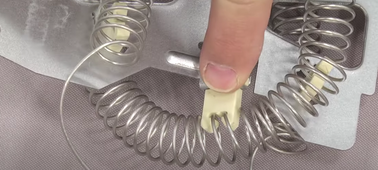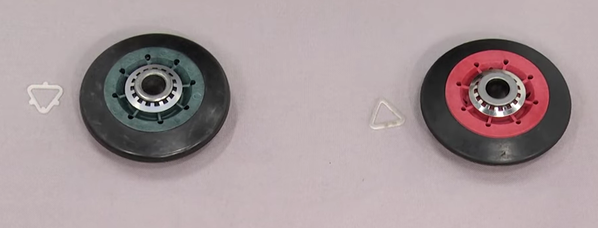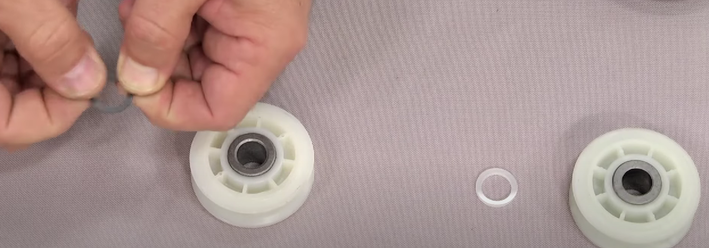
Exploration of Appliance Parts Quality
The intrigue of appliance repair often leads us to the crossroads of choice, where the allure of aftermarket replacements competes with the steadfastness of original equipment manufacturer (OEM) parts. In this journey of discovery, we unearth the essence of longevity and performance.
In this quest for discernment, the discerning shopper is advised to peruse the reviews, sifting through both the OEM and aftermarket offerings. A conspicuous pattern emerges - the aftermarket parts, tempting with their economical price tags, are burdened with an influx of unsavory testimonials concerning premature failure. The adage that "you get what you pay for" rings truer than ever in this arena.
OEM parts, dear reader, are the authentic offspring of your trusty household companions - be it the dishwasher, the microwave, or the refrigerator. They are born from the very hands that crafted your appliance's initial components, ensuring a symphony of functionality with the original parts.
Conversely, aftermarket parts, often referred to as generic substitutes, are spawned by entities distinct from the original manufacturers. These prodigies are designed to fit a multitude of models and brands, oftentimes employing less costly materials in the pursuit of thrift. Alas, this penny-pinching often begets a shorter lifespan, setting them on a collision course with their OEM counterparts.
To discern the disparity, one need only scrutinize an OEM dryer heater element juxtaposed with its aftermarket counterpart. The ceramic in the OEM element exudes a superior quality, boasting meticulous craftsmanship and secure attachment to its bracket. In contrast, the aftermarket rendition, born from a less pristine breed of ceramic, haphazardly clings to its bracket, epitomizing a lack of dedication to the craft. And, subtle but discernable, the wires within the OEM component exhibit a fortitude, resisting manipulation, whereas the aftermarket counterpart bends with disconcerting ease.
A similar tale unfolds with the support roller and idler pulley. The OEM versions, with bearings of a superior ilk, support the drum with a wider, robust rubber, ensuring endurance. Their retaining rings are composed of pliable plastic, an embodiment of ease in securing them onto the shaft. The aftermarket incarnations, alas, fail to mirror this devotion to detail, with bearings fabricated from inferior material, their rollers supported by rigid plastic rings that threaten to snap at the mere hint of stress.
The idler pulleys follow suit, with the OEM variety showcasing white plastic, while their aftermarket counterparts adopt a less desirable bluish-gray hue. The contrasts extend to the washers, as the standard Whirlpool black washer, loyal to the OEM cause, stands in stark contrast to the aftermarket's insipid white plastic spacer.
The tactile world, hidden from our readers' view, speaks volumes. The difference in drag on the shaft, a pivotal component in dryer operation, favors the OEM roller's smooth glide and minimal resistance. In contrast, the aftermarket version often falters in finding its place and labors under the burden of increased friction. The idler pulleys, too, dance to the same tune, their performance mirroring their roller counterparts.
The intrigue of appliance repair often leads us to the crossroads of choice, where the allure of aftermarket replacements competes with the steadfastness of original equipment manufacturer (OEM) parts. In this journey of discovery, we unearth the essence of longevity and performance.
In this quest for discernment, the discerning shopper is advised to peruse the reviews, sifting through both the OEM and aftermarket offerings. A conspicuous pattern emerges - the aftermarket parts, tempting with their economical price tags, are burdened with an influx of unsavory testimonials concerning premature failure. The adage that "you get what you pay for" rings truer than ever in this arena.
OEM parts, dear reader, are the authentic offspring of your trusty household companions - be it the dishwasher, the microwave, or the refrigerator. They are born from the very hands that crafted your appliance's initial components, ensuring a symphony of functionality with the original parts.
Conversely, aftermarket parts, often referred to as generic substitutes, are spawned by entities distinct from the original manufacturers. These prodigies are designed to fit a multitude of models and brands, oftentimes employing less costly materials in the pursuit of thrift. Alas, this penny-pinching often begets a shorter lifespan, setting them on a collision course with their OEM counterparts.
To discern the disparity, one need only scrutinize an OEM dryer heater element juxtaposed with its aftermarket counterpart. The ceramic in the OEM element exudes a superior quality, boasting meticulous craftsmanship and secure attachment to its bracket. In contrast, the aftermarket rendition, born from a less pristine breed of ceramic, haphazardly clings to its bracket, epitomizing a lack of dedication to the craft. And, subtle but discernable, the wires within the OEM component exhibit a fortitude, resisting manipulation, whereas the aftermarket counterpart bends with disconcerting ease.
A similar tale unfolds with the support roller and idler pulley. The OEM versions, with bearings of a superior ilk, support the drum with a wider, robust rubber, ensuring endurance. Their retaining rings are composed of pliable plastic, an embodiment of ease in securing them onto the shaft. The aftermarket incarnations, alas, fail to mirror this devotion to detail, with bearings fabricated from inferior material, their rollers supported by rigid plastic rings that threaten to snap at the mere hint of stress.
The idler pulleys follow suit, with the OEM variety showcasing white plastic, while their aftermarket counterparts adopt a less desirable bluish-gray hue. The contrasts extend to the washers, as the standard Whirlpool black washer, loyal to the OEM cause, stands in stark contrast to the aftermarket's insipid white plastic spacer.
The tactile world, hidden from our readers' view, speaks volumes. The difference in drag on the shaft, a pivotal component in dryer operation, favors the OEM roller's smooth glide and minimal resistance. In contrast, the aftermarket version often falters in finding its place and labors under the burden of increased friction. The idler pulleys, too, dance to the same tune, their performance mirroring their roller counterparts.


